Facility Staff

How can I optimize the use of resources in my sports facility ?
Optimizing the use of resources in a sports facility is crucial for ensuring that the facility runs smoothly, efficiently, and cost-effectively. Here are some tips on how to optimize the use of resources in your sports facility: 1. Conduct a resource audit to identify all the resources in your facility, including equipment, staff, space, and time. 2. Identify areas where you can improve resource utilization, such as removing rarely used equipment or redistributing tasks to balance workloads. 3. Implement scheduling software to manage appointments, classes, and events in advance. 4. Train your staff on topics such as customer service, safety protocols, and equipment maintenance. 5. Encourage customer feedback to provide insights into how your resources are being used and where improvements can be made. 6. Invest in regular maintenance and repairs to keep your resources in good condition and minimize downtime. 7. Consider outsourcing certain services or tasks to free up your staff and save money in the long run.

How can I effectively manage a sports facility ?
Managing a sports facility effectively requires a mix of administrative skills, customer service, and industry knowledge. Key steps include developing a business plan, hiring qualified staff, maintaining cleanliness and safety, offering diverse services, implementing efficient scheduling systems, fostering community building, staying updated with industry trends, focusing on customer service, managing finances wisely, and continuously monitoring performance to make necessary adjustments. Following these guidelines ensures an enjoyable environment for members and the long-term success of the facility.
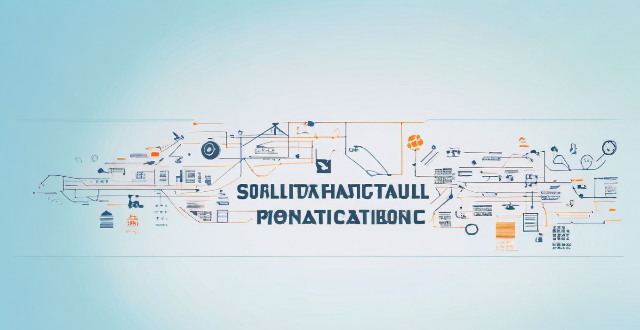
What are the best practices for managing a sports facility ?
Managing a sports facility involves strategic planning, effective communication, and attention to detail. Best practices include setting clear objectives, developing a business plan, maintaining cleanliness and safety, equipment maintenance, training staff, offering quality services, building brand awareness, attracting new customers, budget allocation, and revenue generation. By following these best practices, you can create a successful and thriving sports facility that meets the needs of your customers and achieves your business objectives.

How can I ensure that my sports facility is compliant with all relevant regulations and standards ?
To ensure your sports facility's compliance with all relevant regulations and standards, you should research and understand the applicable rules, conduct a compliance audit, develop a plan to address any non-compliant areas, train your staff, and maintain compliance over time.

What are the key factors to consider when managing a sports facility ?
Managing a sports facility requires attention to several key factors, including facility maintenance, safety measures, customer service, and financial management. Proper maintenance involves regular cleaning, equipment repair and replacement, and overall upkeep of the facility. Safety measures include emergency preparedness plans, first aid availability, and proper supervision during activities. Providing excellent customer service involves clear communication channels, prompt complaint handling, and quality programming options. Effective financial management includes budgeting, revenue generation, and cost control strategies. By focusing on these areas and implementing effective strategies, you can ensure the long-term success and sustainability of your sports facility.

What are some strategies for maintaining and upgrading equipment in a sports facility ?
To maintain and upgrade equipment in a sports facility, it is important to conduct regular maintenance checks, provide training and education to staff and users, allocate sufficient funds for maintenance and upgrades, integrate technology into the facility, and establish partnerships and networks with industry experts. These strategies help ensure the safety of athletes, enhance their performance, and provide a pleasant experience for users.

What are some common challenges faced by sports facility managers and how can they be addressed ?
The text discusses five common challenges faced by sports facility managers, which include high operating costs, maintenance issues, customer satisfaction, safety concerns, and marketing and promotion. For each challenge, the author provides a solution to help sports facility managers overcome these obstacles. 1. **High Operating Costs:** Implement budget planning, energy efficiency measures, and staff training to reduce expenses. 2. **Maintenance Issues:** Adopt preventive maintenance schedules, outsource services, and educate users on proper equipment usage. 3. **Customer Satisfaction:** Establish feedback mechanisms, provide customer service training, and diversify offerings to meet user needs. 4. **Safety Concerns:** Conduct regular safety checks, develop emergency plans, and ensure adequate supervision to prevent accidents. 5. **Marketing and Promotion:** Utilize social media, form partnerships, and implement loyalty programs to attract and retain users.

How do celebrities maintain and staff their large mansions ?
Celebrities own sprawling mansions that require a lot of effort to maintain. To keep these luxurious homes in top condition, celebrities rely on a team of dedicated staff members, including property managers, housekeepers, grounds maintenance workers, security personnel, chefs, and other specialized staff. By hiring a dedicated team of professionals, celebrities can ensure that their luxurious homes remain comfortable, safe, and well-maintained at all times.
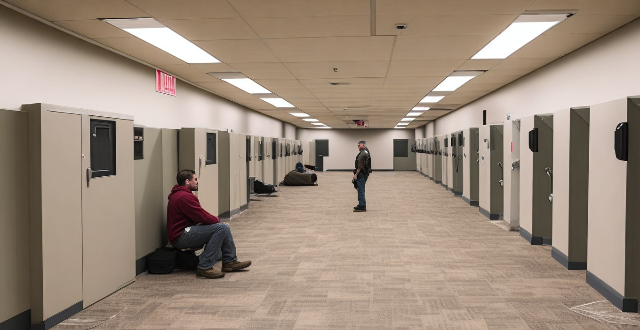
How do I ensure the safety of athletes and visitors in my sports facility ?
How to ensure the safety of athletes and visitors in a sports facility includes installing security cameras, hiring security personnel, controlling access, maintaining cleanliness, training staff on emergency procedures, and educating athletes and visitors on facility rules.

What is the protocol for tipping staff on a cruise ship ?
Tipping protocol on cruise ships includes understanding who to tip, how much to give, and when to do so. Key points include: 1. **Who to Tip**: Stateroom attendants, waitstaff, bar staff, and other service personnel like activities staff and tour guides. 2. **How Much to Tip**: Standard daily gratuity is often automatically added to your bill ($12-15 per person per day), but additional cash tips are encouraged for exceptional service. 3. **When to Tip**: Typically at the end of the cruise when settling your account, or periodically throughout longer voyages. 4. **Cash or Credit Card**: Cash is preferred as it benefits crew members directly; however, some lines allow adding tips to credit card bills. 5. **Alternatives to Cash Tipping**: Prepaid gratuities or gratuity gift cards for those who prefer not to carry cash. Some all-inclusive cruises include gratuities in their price. By following these guidelines, passengers can ensure they are rewarding hardworking crew members appropriately while maintaining proper etiquette.

What are some innovative ways to promote my sports facility and attract more visitors ?
Promoting a sports facility requires a combination of traditional marketing techniques and innovative strategies to stand out in a crowded market. Here are some ways you can promote your sports facility and attract more visitors: 1. Host Events and Tournaments 2. Partner with Local Schools and Clubs 3. Social Media Marketing 4. Community Outreach Programs 5. Referral Programs and Membership Incentives 6. Collaborate with Local Businesses 7. Enhance Your Online Presence
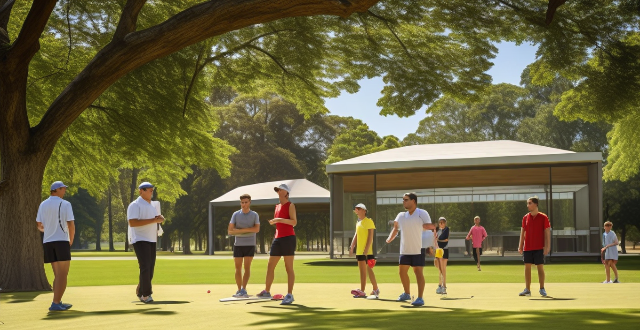
How can I improve the overall experience of athletes and visitors in my sports facility ?
Improving the overall experience of athletes and visitors in a sports facility is crucial for its success. This includes maintaining high standards for facilities and equipment, creating a welcoming atmosphere with friendly staff and clear signage, enhancing customer service with fast response times and personalized service, providing additional services such as catering and refreshments, retail and merchandise, and ensuring adequate parking and transportation options. By focusing on these areas, sports facilities can provide an excellent experience for all who visit.

How often should safety signs be reviewed and updated in a facility ?
Safety signs should be reviewed annually and updated immediately when necessary to maintain a safe environment in a facility.

Can a combination motor drive improve energy efficiency in my facility ?
Combination motor drives can improve energy efficiency in facilities by optimizing electric motor performance, reducing energy consumption, and extending equipment lifespan. They offer variable speed control, soft start/stop capabilities, and reactive power compensation features that contribute to lower energy bills, reduced maintenance costs, and environmental benefits like reduced greenhouse gas emissions.

How can schools improve their food safety standards ?
Improving food safety standards in schools is crucial for protecting the health of students and staff. Here are some ways that schools can enhance their food safety practices: 1. Implement a HACCP System 2. Train Staff on Food Safety 3. Use Proper Handling and Cooking Techniques 4. Maintain Cleanliness and Sanitation 5. Enforce Strict Ingredient Sourcing Policies 6. Establish Clear Policies for Illness Reporting 7. Conduct Regular Audits and Reviews

How can sports facilities be designed to enhance community connectivity and accessibility ?
Sports facilities play a crucial role in promoting physical activity, social interaction, and overall well-being within communities. To enhance community connectivity and accessibility, sports facility design should prioritize inclusivity, convenience, and engagement. Here are some key strategies: ### Inclusive Design Inclusive design ensures that everyone, regardless of age, ability, or background, can access and enjoy the sports facilities. This includes accessible entrances, ramps and elevators, gender-neutral restrooms, sensory friendly spaces, and multilingual signage. ### Convenient Location and Transportation The location and transportation options for sports facilities significantly impact their accessibility and community connectivity. Considerations include centralized locations, public transportation links, bicycle racks and walking paths, and on-site parking. ### Community Engagement Features Designing sports facilities with community engagement in mind fosters a sense of belonging and promotes regular use. Some features might include community meeting spaces, outdoor spaces, partnership programs, and recreational opportunities. ### Technology Integration Technology can greatly enhance the experience at sports facilities, making them more interactive and user-friendly. Some technological enhancements could be online booking systems, interactive maps, fitness app integration, and social media hubs. ### Safety and Security Ensuring the safety and security of visitors is paramount in designing sports facilities. This involves clear lines of sight, emergency procedures, well-trained staff, and security measures. By focusing on these design principles, sports facilities can become vibrant hubs of community life, promoting health, social interaction, and a sense of belonging for all members of the community.

How can employers encourage their staff to engage in regular exercise ?
Encouraging regular exercise among employees is crucial for maintaining good health and well-being. Employers can play a significant role in promoting physical activity among their staff, which not only benefits individual employees but also enhances overall productivity and reduces healthcare costs. This response explores various strategies that employers can implement to encourage regular exercise among their workforce, including providing on-site fitness facilities, flexible scheduling, organizing fitness challenges, promoting health and wellness programs, and recognizing employees' efforts. By implementing these strategies, employers can create a supportive environment that promotes physical activity in the workplace, contributing to the overall well-being of employees and leading to increased productivity and reduced healthcare costs for the company.
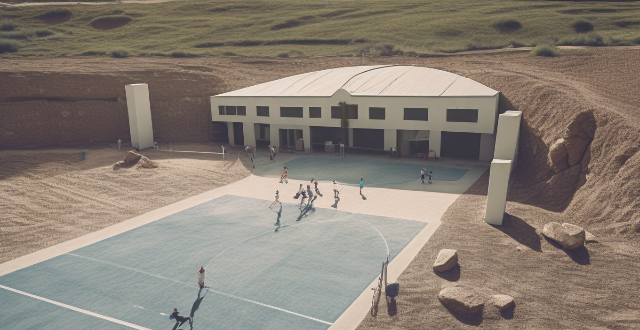
How effective are the treatments at sports rehabilitation centers ?
Sports rehabilitation centers play a crucial role in helping athletes recover from injuries and return to their peak performance levels. The effectiveness of treatments at these centers depends on various factors, including the expertise of the staff, the facilities available, and the individual needs of each athlete. In this article, we will discuss the key aspects that contribute to the success of sports rehabilitation programs.
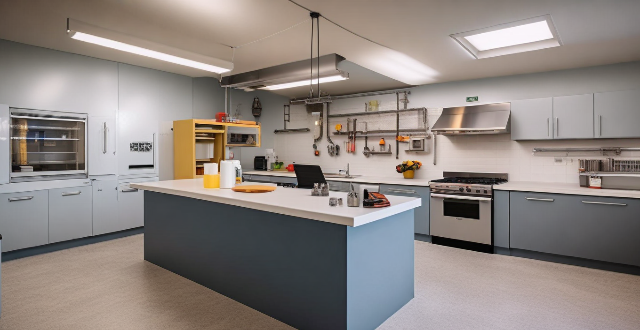
What are the recommended disinfection procedures for healthcare facilities to ensure patient safety ?
Healthcare facilities must implement strict disinfection procedures to ensure patient safety and prevent disease spread. These include using PPE, practicing hand hygiene, cleaning and disinfecting surfaces, sterilizing critical instruments, and managing waste properly. Specific areas of concern are patient rooms, operating rooms, labs, waiting areas, and public spaces. Regular training, surveillance, and environmental monitoring are essential for maintaining effective disinfection practices.
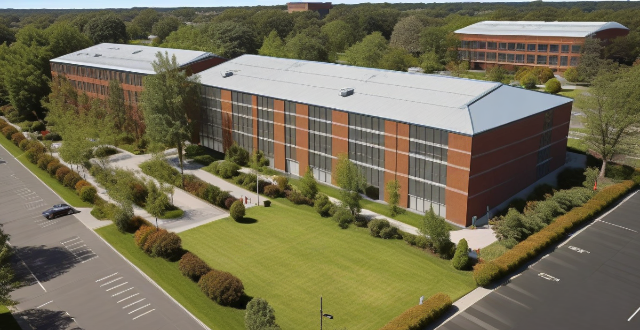
How can I assess the quality of a school's facilities and infrastructure ?
When evaluating the quality of a school's facilities and infrastructure, consider factors such as the age and condition of buildings, technology availability, cleanliness, safety, and accessibility. Take a tour, check technology resources, observe cleanliness and maintenance, assess safety measures, review outdoor spaces, and gather feedback from students, parents, and staff.

How do biosafety policies address the risk of accidental or intentional release of harmful biological agents ?
Biosafety policies are comprehensive measures designed to manage the risks associated with accidental or intentional releases of harmful biological agents. These include: 1. **Biosafety Levels**: Four tiers of guidelines for handling different risk groups of microorganisms, each with specific facility, equipment, and training requirements. 2. **Laboratory Procedures**: Strict adherence to safety procedures using engineering controls, personal protective equipment, standard microbiological practices, and waste management protocols. 3. **Regulations and Compliance**: Government laws and regulations ensuring safe handling through transportation guidelines, facility registration, reporting requirements, and oversight by agencies like the CDC. 4. **Training and Education**: Regular sessions on biosafety practices, emergency response, and continuous learning to keep personnel updated. 5. **Incident Response Plans**: Preparedness for incidents through emergency response teams, decontamination procedures, medical treatment, and communication strategies. By addressing these aspects diligently, biosafety policies aim to minimize the risk of accidental or intentional release of harmful biological agents.
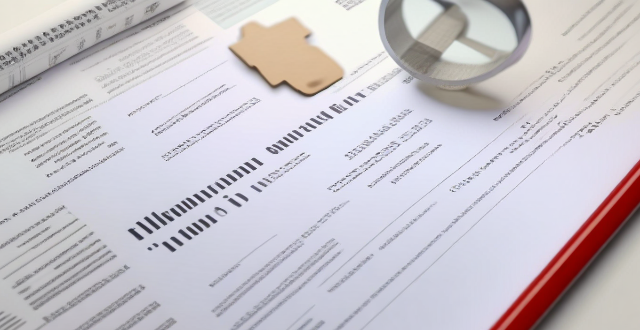
What should be included in a safety drill report ?
In summary, a safety drill report is an essential document that provides a detailed account of the findings and outcomes of a safety drill conducted in an organization or facility. It includes key elements such as header information, purpose of the drill, participation details, drill procedures, performance assessment, findings & recommendations, and conclusion. The report also includes attachments and supporting documents such as photos/videos, attendance records, and emergency contact information. By incorporating these elements into a comprehensive safety drill report, organizations can effectively evaluate their readiness to handle emergencies and continuously improve their safety protocols.

How can biosafety be improved in healthcare facilities ?
Improving biosafety in healthcare facilities involves implementing clear policies, using advanced technology, and creating a culture of safety. Specific strategies include developing SOPs, regular training, designated biohazard areas, infection control measures, surveillance, waste management, emergency response planning, encouraging reporting, leadership support, and staying updated with scientific advancements.

How can data analytics be used to inform school policy decisions and resource allocation ?
Using data analytics can greatly inform school policy decisions and resource allocation. By analyzing data, schools can identify areas for improvement, personalize learning experiences, evaluate teacher performance, allocate resources effectively, and enhance student support services. This approach leads to improved student outcomes, teaching quality, and resource use.

What are the potential consequences of not having adequate biosafety policies in place ?
Biosafety policies are crucial for handling and containing biological materials safely. Inadequate biosafety measures can lead to direct and indirect exposure to pathogens, spread of disease, environmental contamination, legal and ethical issues, and economic impacts. It is vital for institutions and researchers to prioritize biosafety measures to protect human health, the environment, and society.

Are there specific regulations for the size and placement of safety signs ?
The size and placement of safety signs are regulated to ensure their effectiveness in promoting workplace safety. The regulations vary depending on the country and industry, but they generally aim to ensure that safety signs are easily visible and understandable to all workers and visitors in a facility. The size of safety signs is typically determined by the type of sign and the distance at which it needs to be read. Prohibition and warning signs should be at least 100mm x 100mm in size, while mandatory signs should be at least 75mm x 75mm and safe condition signs should be at least 65mm x 65mm. The placement of safety signs is also important to ensure their effectiveness. Safety signs should be placed at a height between 1.5m and 2.5m above floor level, where they can be easily seen by both standing and seated workers. They should also be placed in locations where they can be easily seen without being obstructed by equipment or other objects. Directional signs should be placed at decision points, such as intersections or turns, to guide workers and visitors through a facility. Warning signs should be placed near potential hazards, such as chemical storage areas or high voltage equipment, to alert workers and visitors to potential dangers.

What happens to my iPhone after I recycle it ?
When you recycle your iPhone, it goes through a series of steps to ensure proper disposal and recycling of its components. You should first wipe your data and remove accessories before packaging and shipping it to a certified e-waste recycling facility. The facility will then disassemble the phone, sort its components, shred some parts, extract valuable metals, recycle remaining materials, and properly dispose of anything that cannot be recycled or reused. This process helps reduce electronic waste and promote sustainable practices by conserving resources and protecting the environment.
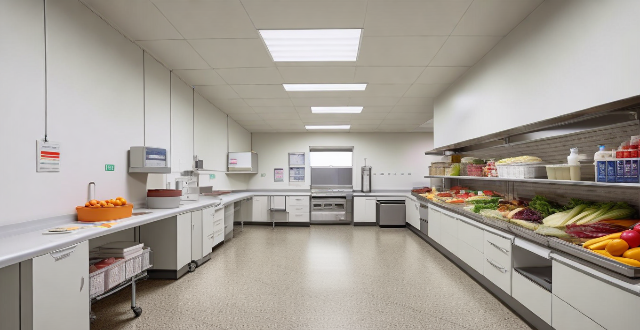
How do safety regulations affect the hospitality industry ?
The hospitality industry is heavily impacted by safety regulations, which are crucial for maintaining the well-being of both employees and guests. These regulations cover various areas including food safety, fire safety, health and hygiene standards, and employee training. Proper handling, storage, and preparation of food items are essential to prevent foodborne illnesses, while functioning smoke detectors, fire extinguishers, and emergency exits ensure fire safety. Regular cleaning and disinfection of guest rooms, public areas, and workstations maintain high health and hygiene standards, and PPE may be required for certain tasks. Comprehensive employee training on various safety topics is vital for compliance with safety regulations. Overall, adhering to these regulations helps establishments maintain a safe environment and provide excellent service to customers.
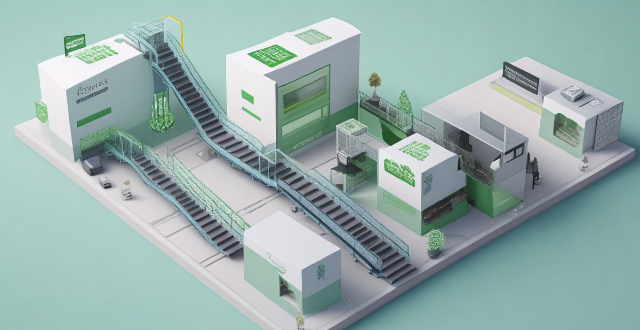
How long does it take for an iPhone to be recycled ?
Recycling an iPhone involves several steps including collection, transportation, sorting, testing, disassembly, recycling, data erasure, security checks, and finally refurbishment or resale. The entire process can take from two weeks to several months depending on various factors.

How can sustainability be incorporated into the design of a sports venue ?
Sustainability is a crucial aspect of modern architecture and design, including the design of sports venues. Incorporating sustainable practices not only reduces the environmental impact but also contributes to the long-term viability and cost-efficiency of the venue. Here's how sustainability can be integrated into the design of a sports venue: Energy Efficiency: Solar Power, Energy-Efficient Lighting, Smart Building Management Systems Water Conservation: Rainwater Harvesting, Water-Saving Fixtures Material Selection: Recycled and Renewable Materials, Locally Sourced Materials Waste Management: Composting and Recycling Facilities, On-Site Recycling Programs Green Spaces and Landscaping: Native Plant Landscaping, Green Roofs and Walls Community Engagement: Educational Programs, Partnerships with Environmental Organizations By incorporating these elements into the design of a sports venue, architects and planners can create a space that not only hosts exciting athletic events but also serves as a model for sustainable development.